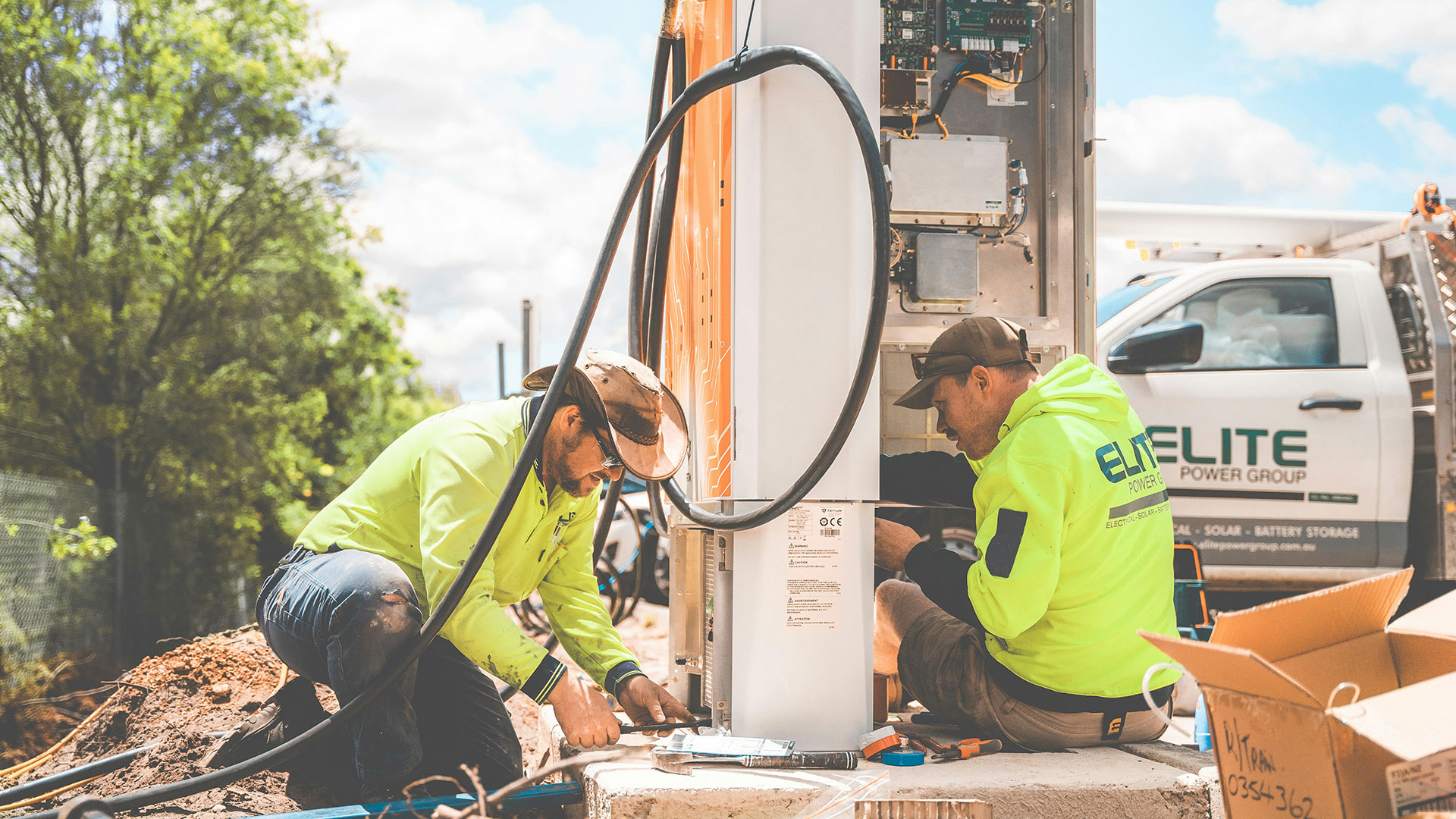March 29, 2024
As global competition of electric vehicle (EV) manufacturing increases, the steady adoption rates we’ve seen for the past few years are poised to start climbing more quickly. And EVs have already made themselves a staple of our transportation systems, holding a 7.6% share (nearly 1.2 million vehicles) of the total US vehicle market in 2023.
Whenever a new technology arrives in your community, you want to be ready—and that’s true no matter your community’s size. While the concept of electric vehicle planning might sound like it’s reserved for major urban areas with major budgets, the reality is every community is impacted by the increasing adoption rate of EVs and needs to figure out what charging infrastructure looks like, both now and based on future projections.

The steady adoption rates we’ve seen for the past few years are poised to start climbing more quickly.
We Got the Money, Now What?
Cities and states across the country have set goals to be carbon neutral or to reduce greenhouse gas emissions. EVs are one tool that can help meet those goals. Most communities are aware of their need for charging infrastructure, and the availability of history-making amounts of federal funding. This creates a sense of urgency to apply for EV infrastructure grant money, and many agencies are getting it—but they might not have a clear sense of where the charging stations should go, what kind of chargers they might need, or who is going to operate and maintain them.
Enter the EV plan. An EV plan helps communities maximize funding and prepare for the ways that EVs will uniquely impact their community.
You can think of an EV plan like creating a business model for your city. Cities that don’t have EV plans may assume it’s up to them to install and maintain EV charging stations. An EV plan helps a city think through how to select and work with vendors, coordinate with power companies, strategize zoning and building codes so that new developments provide EV charging capabilities, and ultimately create an effective, sustainable, and equitable business model for the distribution and development of EV charging infrastructure.
Not Just for Big Cities
EV plans come in many sizes and budgets. From a compact EV in an urban core to an electric truck pulling a horse trailer in a rural area, EVs are changing transportation in just about every context. Many communities, smaller ones included, also have a goal of transitioning their fleets (emergency vehicles, school and transit buses, waste management vehicles, etc.) to electric or zero emission vehicles, which takes significant time and planning to do.
Smaller or rural communities may face unique challenges with providing charging infrastructure, such as not having electric distribution lines or the ability to power chargers. An EV plan helps these communities identify where EV charging stations make sense, develop a realistic plan and timeline, and craft strategies that fit their specific context. For example, if you’re a small resort town, you might be thinking about electric boats!
5 Tips for Creating an Effective EV Plan
While the best EV plans are those tailored to their specific communities, here are a few recommendations we’d offer to any community preparing to kick off an EV planning process:
- 1. Select the sites and charging equipment that meet your community’s needs. Go through the exercise of prioritizing where you’ll need EV charging based on high density uses, workplace charging, and where you need fast charging. You’ll then be in a position prioritize investments and to update zoning codes to private developers to install chargers in those locations.
- 2. Incentivize vendors and contractors to have EV adoption rates as new equipment comes on board. This could look like crafting your RFP language to offer extra scoring points for vendors that have an adoption rate goal. For example, the City of Boise is partnering with Republic Services to test electric recycling vehicles.
- 3. Consider your budgeting and accounting processes. How are EV charging stations interfacing with your internal accounting system? You may need to make adjustments so that you can effectively track charging use by different municipal fleet departments. Also be aware of local franchise agreements with utilities regarding the resale of power to the public.
- 4. Include a plan for training your workforce. An EV plan is not a “one and done” effort. How is your workforce prepared to own the initiatives moving forward? Consider partnering with a local workforce development program to train and employ a local workforce to install, operate, and maintain the chargers.
- 5. Finally, be nimble! Charging technology and charging station business models are rapidly changing. What communities did yesterday will be different than what you’ll do a year from now. It’s valuable to have eyes on the industry and what’s changing, from EV competition and adoption to battery and charging technology, so that you can respond.

An EV plan helps a city think through how to select and work with vendors, coordinate with power companies, and strategize zoning and building codes.
What Does an EV Plan Look Like?
Let’s get past the theoretical and head to the Town of Cary, North Carolina for a practical example. Cary is a vibrant community located in the heart of North Carolina’s Research Triangle with a population of around 170,000 residents.
In 2019, the Town of Cary adopted Carbon Reduction Recommendations, which included the goal to reduce community carbon emissions from a 2018 baseline 25% by 2025 and 100% by 2040. Kittelson partnered with the town to conduct an EV charging study to identify EV trends and infrastructure needs, transition the Town’s fleet of vehicles to EVs, and identify changes to codes and programs that would support private EV charger development. We tackled these goals through several steps:
- Reviewing statewide and regional plans to determine appropriate assumptions for future EV adoption.
- Estimating the number of EV chargers needed by 2025 and 2030; and breaking down these estimations by DC fast charging ports, public Level 2 charging ports, and workplace Level 2 charging ports.
- Conducting a spatial analysis using housing and employment densities, key points of interest, Annual Average Daily Traffic (AADT), and disadvantaged communities to recommend where these chargers would be needed.
- Conducting peer city interviews to identify best practices for electrifying municipal fleets and providing recommendations to install charging infrastructure and scale up the Town’s EV fleet.
- Conducting a review of Cary’s codes and recommending revisions to its Land Development Ordinance. At the request of town staff, we also developed planning guidance for multi-family and commercial land uses, including creating a developer checklist to help plan appropriately for charging infrastructure installation.
We used this information to develop a Roadmap to help Cary’s staff and local developers understand where the town is today as it relates to EVs, and where it needs to go to develop a comprehensive and equitable EV charging network. The Roadmap outlined best practices to guide design for charging infrastructure according to EV user needs, surrounding land use, accessibility, and site constraints, and set a course for electrifying the Town’s municipal fleet.
Charging into the Future
Communities that take the time to develop EV plans are positioned to not just get charging infrastructure implemented equitably throughout their community, but to do so in a way that sets up the agency and vendors for sustainable success. The “business model” nature of an EV plan defines who is going to own, operate, and maintain charging stations. Selecting a business model lets agencies confidently issue RFPs for the design, installation, and maintenance of the stations and coordinate with power companies early and often, which is essential. These steps are needed no matter your community’s size, so don’t write yourselves off if you’re not a major metropolitan area. Don’t wait until you’re ready to install chargers—now is the time to prepare!
At Kittelson, we’ve been excited to assist communities of many sizes with thinking through their EV needs within the context of their larger transportation planning, funding, and operating system. If you’d like to open a conversation about what this could look like for your community, don’t hesitate to reach out!
